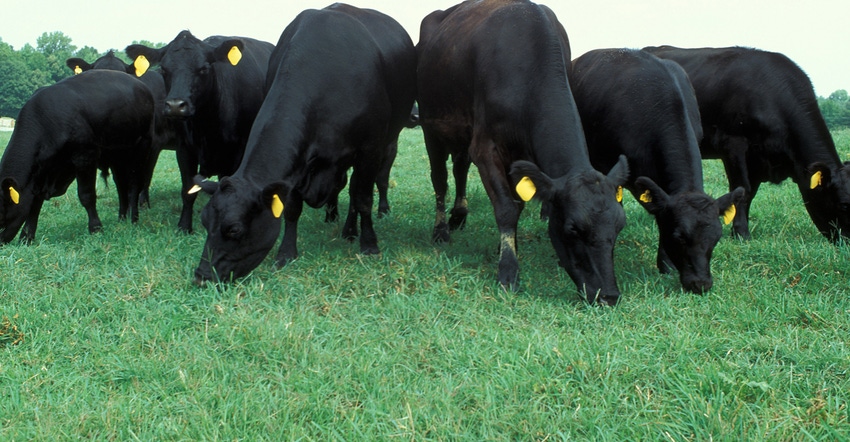August 9, 2019

The beef industry is focused on building demand, both domestically and internationally, as record amounts of protein now are being produced.
The U.S. beef herd has been slowly growing since the 2014-15 drought years. So, the recent news that Japan has agreed to lift age restrictions on U.S. beef is welcome. The new market access, according to USDA estimates, could boost beef exports by $200 million per year.
The announcement follows a meeting between USDA Secretary of Agriculture Sonny Perdue and Japanese government officials who discussed the importance of science-based trade rules. The new terms, which took effect immediately, allow U.S. products from all cattle — regardless of age — to enter Japan for the first time since 2003.
Japan, one of the largest importers of beef in the world, already is considered the largest customer of U.S. beef — purchasing $1.5 billion in 2017, according to the American Farm Bureau Federation. Japan’s household consumption rate of beef continued to trend upward in 2018 with monthly per-capita consumption 7.2% above 2017 rates.
“International trade and removing nontariff trade barriers are really important, as $350 of the value in a fed animal is attributed to being able to export,” says George Quackenbush, executive director of the Michigan Beef Industry Commission. “Japan is a top market with great potential for cattle over 30 months of age.”
But even with the barriers removed, major beef competitors such as Australia and New Zealand still have an advantage in terms of lower tariffs through the 11-nation Comprehensive and Progressive Agreement for Trans-Pacific Partnership — the U.S. is not a member.
“We’re hoping that bilateral trade talks will help to get tariff rates reduced to put us on par with TPP,” Quackenbush adds. “Japan is our largest beef export market. In 2017, 25% of our exports were to Japan with a $9 billion value — and that was with a 38.5% tariff rate.”
Japan isn’t the only major player in beef trade agreements. “The new United States-Mexico-Canada Agreement is key and eyes around the world are looking at it,” Quackenbush says. “Both Mexico and Canada are in our top five export markets. It is critical for our industry.” The USMCA has been signed, but it has yet to ratified and implemented.
And as countries around the globe enter the middle class, improve their diets and consume more protein, “trade agreements will have long-term impacts for our industry,” Quackenbush says. “We need to think about the next generation. The things we are working on right now can provide opportunities for beef producers into the future.”
For cattle farmers in Michigan and Wisconsin, an increase in export markets and potentially prices would be welcome after the past couple of years of declining pricing.
“Our livestock farmers, like most of agriculture, are learning to adapt to the many factors impacting their operations — from weather and market prices to trade and policy developments,” says Jeff Sommerfield, vice president of commercial lending for GreenStone Farm Credit Services. “Our customers have exhibited the discipline and dedication to meet the challenges before them with Greenstone positioned to offer an array of products and services, to help them be successful now and in the future.”
Building domestic demand
The beef checkoff program, both nationally and at the state level, acts as a catalyst for change and is designed to stimulate beef sales and consumption through a combination of initiatives, including consumer advertising, research, public relations and new-product development.
“We are very consumer focused, as we need to make sure beef is hitting the mark,” Quackenbush says.
That includes making sure beef is responsibly raised, he adds, and noting that it is packed with nutrients, supplies a good eating experience and can fuel active, healthy lifestyles.
“We have millennium parents — people born between 1980 and 2000 — who are starting families. What protein choices are they going to make?” Quakenbush asks. “In Michigan, for the last couple years, we have advertised on YouTube because that’s where they go to get information.”
The popular “Beef. It's What's For Dinner” campaign continues to engage consumers by providing information on the web by supplying recipes, recommending cuts of meat, cooking instructions and more.
The national campaign now includes a digital assistant called “Chuck Knows Beef.” The app can be downloaded on Amazon Alexa or Google Home Assistant.
“We know that 50% of homes have one of those devices and often in the kitchen,” says Quakenbush, adding that Chuck can provide all the information found on “Beef. It’s What’s For Dinner.”
To learn more about the beef checkoff and the work being done there, visit mybeefboard.org.
Source: GreenStone Farm Credit Services, which is solely responsible for the information provided and is wholly owned by the source. Informa Business Media and all its subsidiaries are not responsible for any of the content contained in this information asset.
You May Also Like




